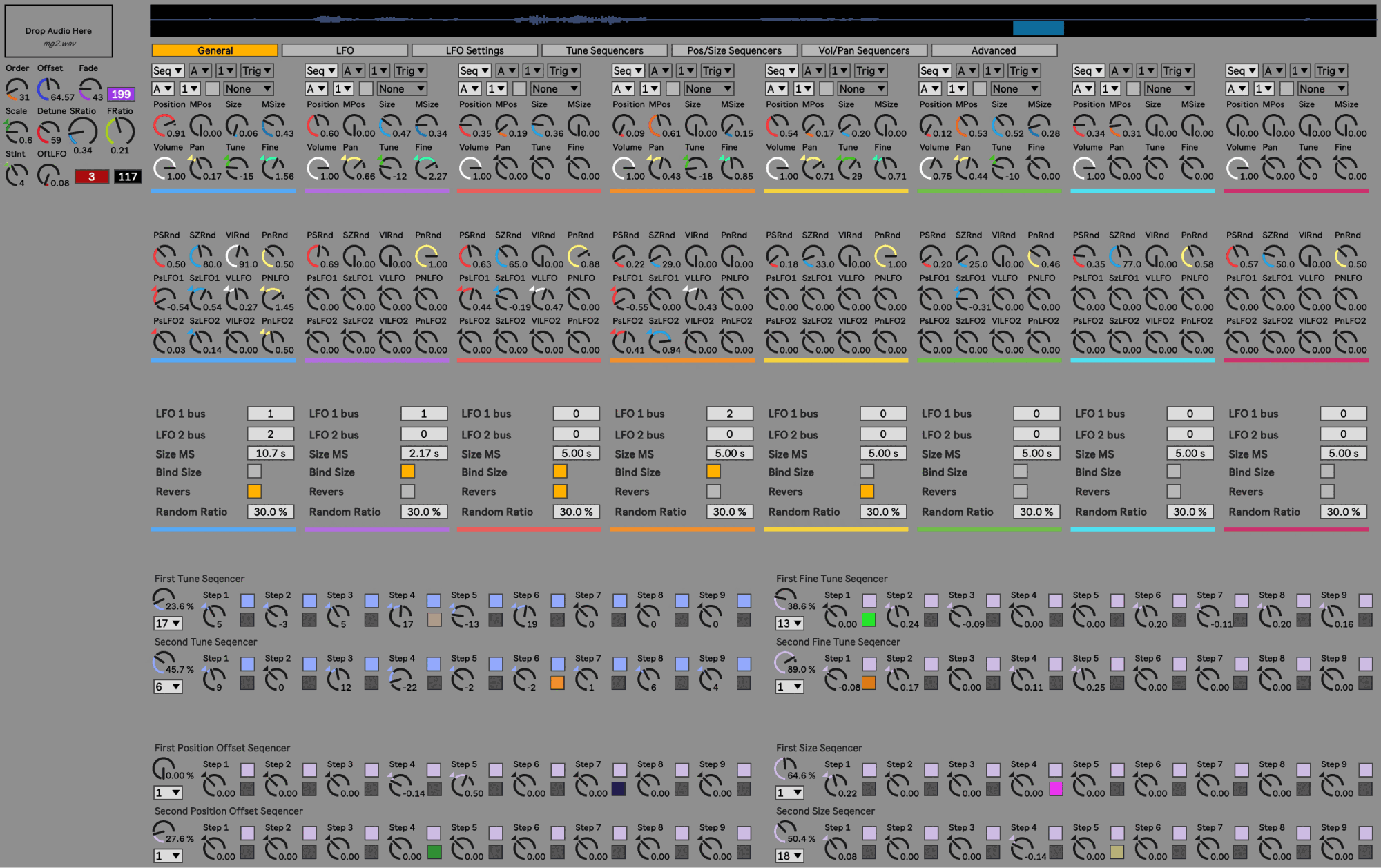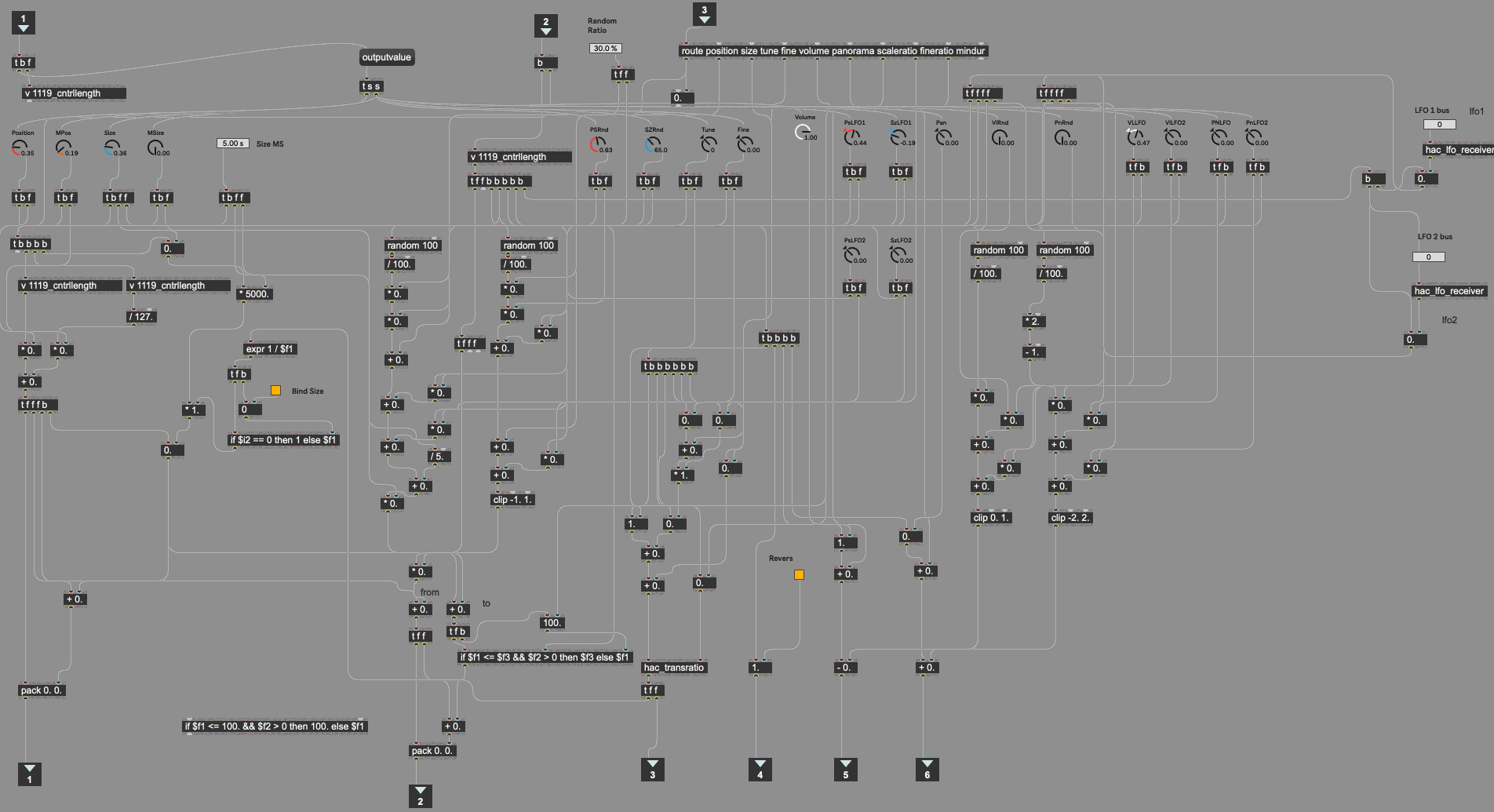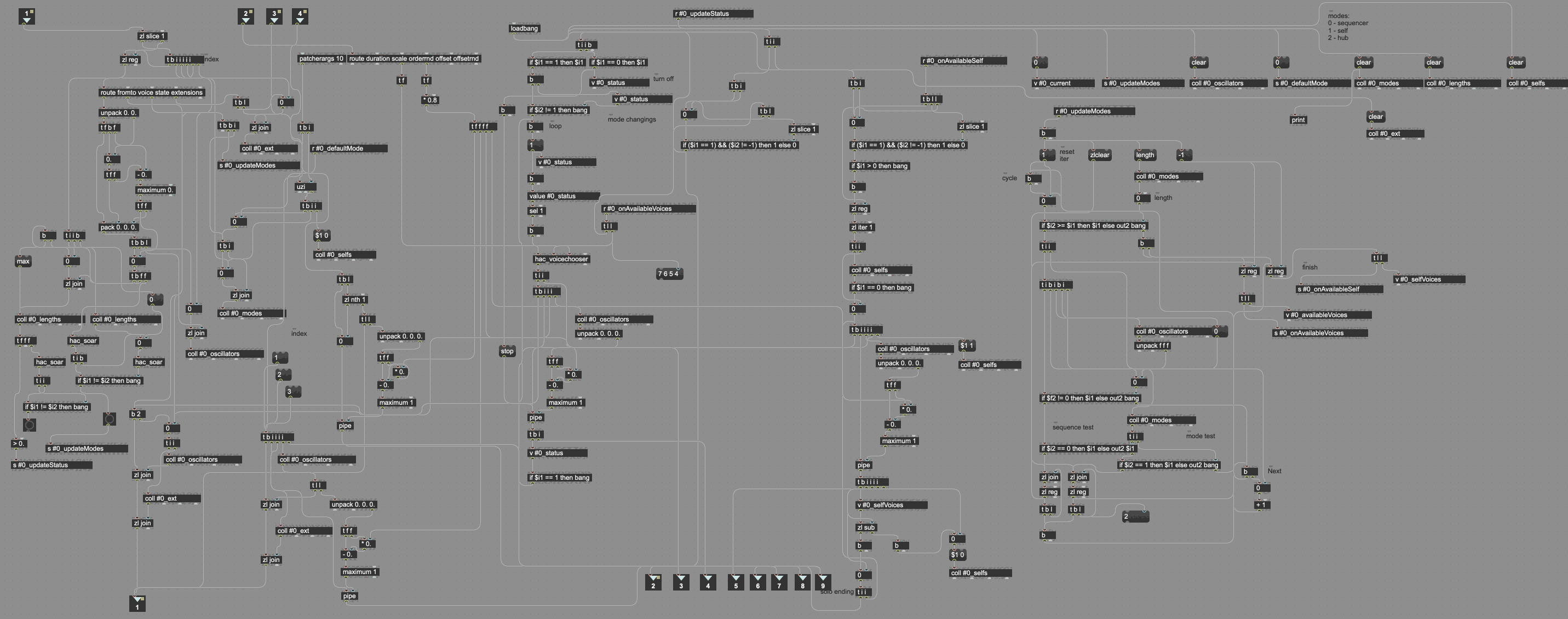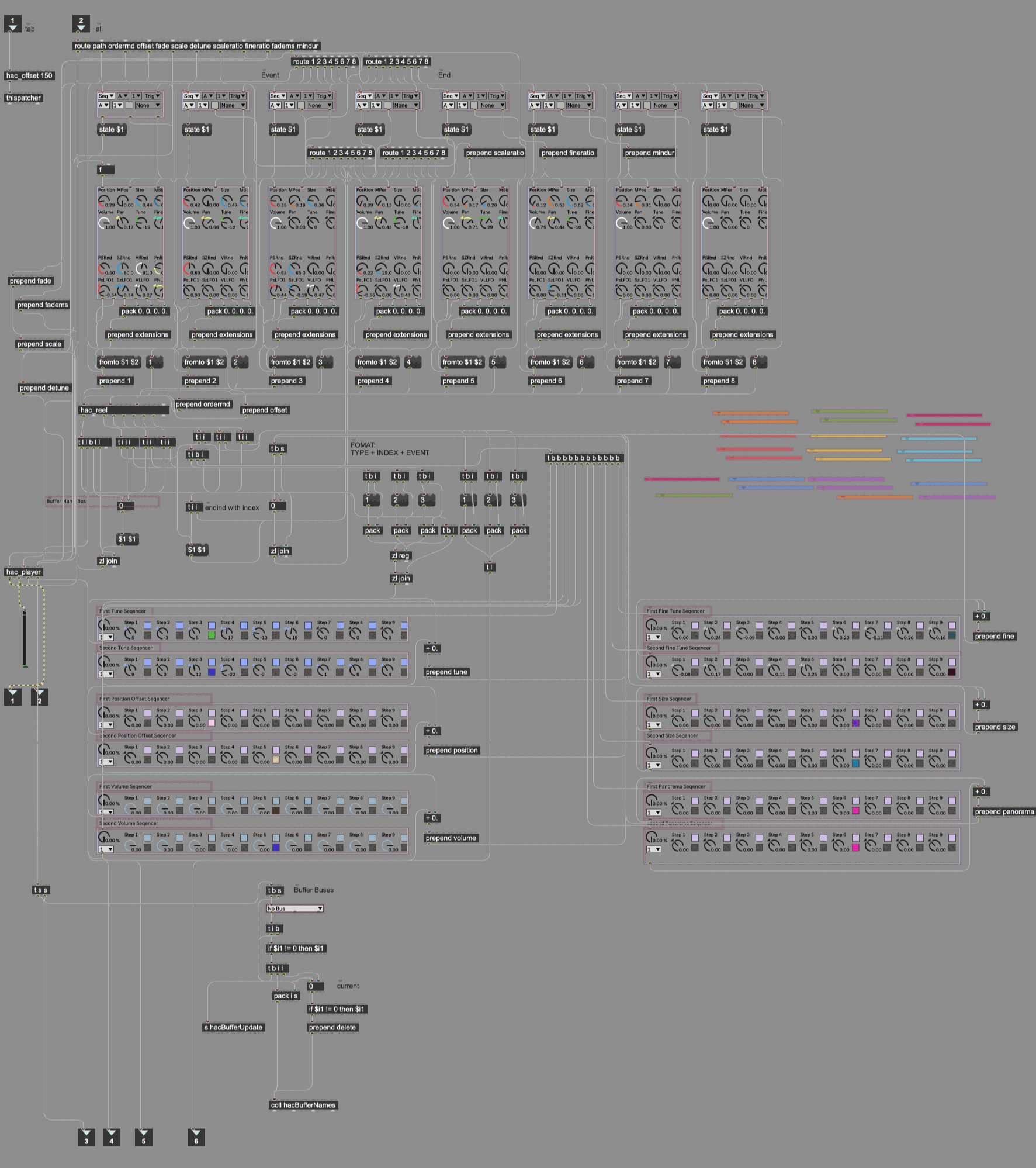Hachijo Tape Manipulator - Max For Live Plugin
The Hachijo Tape Manipulator emerged from a deeply personal need to break boundaries in composing and sound design. At the time, no existing device met the specific creative vision I had in mind. This absence of a suitable tool drove me to create something entirely original—an instrument tailored to my specific artistic purposes.
I have always been drawn to the imperfections and the nature of tape-based recording. These elements are impossible to replicate in purely digital systems. But I didn’t aim to simply emulate vintage tape players, I wanted to explore the philosophy and potential of splicing tape loops further. Without a comparable tool available, I turned to Max for Live, an environment I had limited experience with, and began designing the manipulator from scratch.

The Hachijo Tape Manipulator is the result of that effort. It builds on the mechanics of traditional tape players—splices, loops, and offsets—while extending their capabilities in ways that invite exploration. Its design offers precise control over randomness, behavior, and spatial dynamics, enabling soundscapes to unfold and evolve in real time.

The Hachijo Ecosystem
The Hachijo Tape Manipulator is part of a broader Hachijo ecosystem, a series of tools and devices built around a shared philosophy. This ecosystem is designed to bridge the tactile imperfections of analog techniques with the precision of digital innovation. Each device complements the others, providing an interconnected framework for creating soundscapes that feel both organic and deliberate. The manipulator serves as the central tool in this ecosystem, pushing the boundaries of what is possible in sound design.

The Core Design Philosophy
One of its most important innovations lies in its ability to operate entirely out of grid while maintaining coherence. Each splice within the uploaded audio can have its own offsets, timing adjustments, and behavior settings, allowing for soundscapes that feel organic and alive. The tool’s internal logic ensures that even as elements deviate from rigid structures, they retain an intrinsic connection, making compositions feel intentional rather than chaotic.
A key feature is the internal triggering system, which assigns actions or events to specific splices. For example, when a splice begins or ends playback, it can trigger another sound or event within the manipulator or across external hardware. These triggers enable intricate interdependencies between layers of sound, creating compositions that are dynamic, evolving, and interconnected.
The system supports multi-layered interactions, making it possible to design soundscapes that seamlessly blend structure with unpredictability. Moreover, any event within the system can be monitored and responded to by another instance of the Hachijo Tape Manipulator. For example, in Ableton Live, you can create several tracks, each featuring an individual instance of the Tape Manipulator. These instances can communicate through a shared bus system, enabling comprehensive dependencies and synchronized behaviors. This setup allows for the creation of complex, interwoven compositions where each track influences and responds to others, opening new possibilities for generative sound design and performance.
The LFO System
The manipulator features its own custom LFO system, designed entirely within Max for Live. Unlike Ableton Live's LFOs, this system employs a bespoke bus architecture, allowing users to send modulation signals to specific parameters or receive them selectively. Each bus can target splice position, timing offsets, or other parameters, enabling deeply interactive and layered soundscapes.


In addition to the internal LFOs, I developed a series of external LFO generators as separate Max for Live plugins. These external devices expand the ecosystem's capabilities by allowing users to integrate more complex modulation patterns and behaviors. The external generators work seamlessly with the Hachijo system, offering an even greater range of creative possibilities.

The Sequencers
The manipulator includes 12 independent 9-step sequencers that operate across the entire audio composition. Each sequencer advances to the next step only after the current splice completes playback, ensuring a dynamic flow of patterns. Users can turn off specific steps within each sequencer, allowing precise control over when parameters are triggered.

These sequencers control key parameters such as splice position, size, tuning, and fine-tuning. Each parameter is managed by two dedicated sequencers, which can work together or independently. When combined with the malfunction adjustments—introducing occasional timing or functional variations—this setup creates endless possibilities for unique combinations.
A Visual and Experiential Interface
The manipulator’s interface reinforces this sense of fluidity. Each splice is represented visually, with real-time feedback on activity and timing adjustments. This visualization not only enhances usability but also deepens the connection between the artist and their work, making it easier to experiment and refine compositions in the moment.
Features like customizable tuning systems and panorama adjustments further enhance the creative scope. The ability to shift timing offsets, experiment with layers, and create soundscapes that feel both cohesive and out of grid is central to the manipulator’s design philosophy.
Bringing Ideas to Life
Since its development, the Hachijo Tape Manipulator has played a key role in many of my projects, from creating artificial bird songs to contributing to sound installations like The Cloud Orchestra or The Age Of Anxiety. It has become a tool that encourages exploration and flexibility in sound design, aligning naturally with my creative approach.
The Hachijo Tape Manipulator reflects the potential of tools shaped by artistic intent. It offers a thoughtful balance between concept and execution, supporting the creation of soundscapes that are both cohesive and expansive.
The Current State of Things
I currently neither sell nor distribute the plugin. If you’re interested in accessing it in the future, feel free to join the queue by sending me an email at hello@alexeyseliverstov.com. Thank you!






